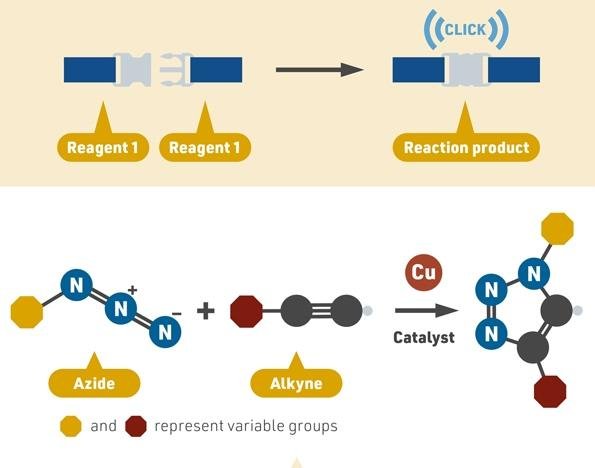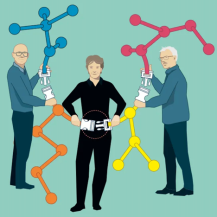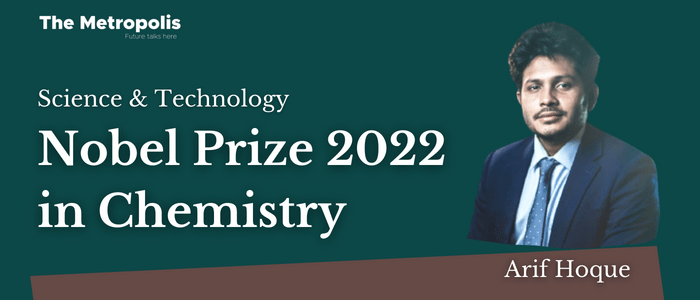Nobel Prize 2022 in Chemistry is surely one of the most influential ever, since one of the winners this year, Karl Barry Sharpless, has won the prize for the second time, being only the fifth scientist ever to achieve this distinction. Again, another winner Carolyn Ruth Bertozzi is the eighth among the women to win the Nobel Prize in the field of Chemistry. The third person sharing this prize equally with the earlier mentioned two scientists is Morten Peter Meldal, a Danish chemist and a professor of Chemistry at the University of Copenhagen.
The main ideator of this year’s Nobel Prize is Dr. Karl Barry Sharpless, an American chemist and the W.M. Keck Professor of Chemistry at the Scripps Research Institute in the USA. While looking for a minimalistic approach, he invented a brand-new branch of Chemistry that he named “Click Chemistry” around the year 2000 with a belief that chemists should stop copying compounds from nature directly since this frequently led to extremely challenging molecular structures and acted as a barrier to the creation of novel medications. It may be simpler to produce natural compounds in a small volume for clinical trials, but for mass industrial production, achieving a high production efficiency has always been challenging. As an example, it took more than 6 years for the industrial development of Meropenem, a broad-spectrum antibiotic.
Let us understand what “Click Chemistry” is. Imagine your screwdriver fails to attach to the head of the screw properly and keeps slipping, which makes its usage very time-consuming, and tiresome. What if, you could magnetize the tip of your screwdriver so whenever you bring it near the head of the screw, it automatically clicks on to the right place of the screw as you need it. The concept of “Click Chemistry” works exactly this way. Scientists have achieved success in following this process for synthesizing various bio-molecules as per their necessity.


“Click Chemistry” refers to the targeting of a particular type of chemical reagent to react with each other in a controlled environment and condition to give the very specific desired product while eliminating the other unwanted byproducts. In this way, the overall process efficiency can reach almost 100 percent. Even if, sometimes, “Click Chemistry” cannot create perfect replicas of natural molecules, it can create molecules with similar functionalities. Combining simple chemical building blocks makes it possible to create an endless variety of compounds, which would be helpful in manufacturing medications as functional as those found in nature and feasible to generate on an industrial scale.
In addition to providing instances of several existing reactions to support his claim, Dr. Sharpless published some requirements for Click Reactions in 2001, which are –
-
Click Reactions occur in one pot.
-
Click Reactions are not disturbed by water or any other surrounding substances.
-
Click Reactions generate minimal and inoffensive byproducts.
-
Click Reactions are “spring-loaded”, characterized by a high thermodynamic driving force that drives them quickly toward the product.
-
Click Reactions are irreversible and the reaction must yield nearly one hundred percent.
The dazzling “Copper-Catalyzed Azide-Alkyne Cycloaddition”, which is today practically synonymous with “Click Chemistry”, was still unknown at that time.
In a similar timeframe, another scientist Dr. Morten Meldal was working independently at his laboratory in Copenhagen to create techniques for identifying possible pharmacological compounds. He created massive molecular libraries, each containing potentially hundreds of thousands of unique compounds, and tested each one to see if any of them may inhibit pathogenic processes.
One day while doing reactions with Alkyne and Alkyl Halide in presence of some copper ions and a pinch of palladium as catalysts, Dr. Meldal observed something unusual – Alkyne had reacted with the wrong end of the Alkyl Halide molecule and formed Azide on the other end. This Azide and Alkyne combined to form Triazole, which is stable and can be found among other things, in several medications, dyes, and agricultural compounds. All the previous research works resulted in undesirable by-products, but the presence of copper ions created the magic and formed only the desired Triazole. Dr. Meldal published this work in a journal in 2002, followed by a symposium presentation in 2001. He showed that several distinct molecules can be joined together via this process.
In the same year, Barry Sharpless, independently from Morten Meldal, published a paper on the copper-catalyzed reaction between Azide and Alkyne that demonstrated the reaction’s reliability and ability to occur in water. He called it the “perfect” click response phenomenon.
Due to its ease of use, Click Reaction has gained huge popularity in both industrial development and research laboratories. It has become possible to click in substances that can conduct electricity, capture sunlight, are antibacterial, protect from ultraviolet radiation or have other desirable properties. In pharmaceutical research, it has been used for creating and improving compounds that can potentially become pharmaceuticals. However, neither Barry Sharpless nor Morten Meldal foresaw that it could be applied to living things. The Nobel Prize in Chemistry 2022’s second thread will now be revealed.
Dr. Carolyn Bertozzi, an American Chemist, and Anne T. and Robert M. Bass Professor at the School of Humanities and Sciences at Stanford University, USA, raised the bar for “Click Chemistry” to a whole new level. She created Click Reactions that function inside living beings to map crucial but elusive proteins called Glycans that are found on the cell surfaces. Her bioorthogonal processes could happen without interfering with the cell’s regular chemistry.
Dr. Bertozzi’s effort has gone a long way in studying cancer, inflammation, and viral infections like COVID-19. She coined the term “Bioorthogonal Chemistry” for these types of chemical reactions that occur in biological environments without affecting biomolecules or interfering with biochemical processes. It is used to understand biology in living organisms. This term is also synonymously called “Copper-Free Click Chemistry” due to its lower activation barrier and no use of a cytotoxic transition metal catalyst like copper.
Carolyn Bertozzi published this work of her known as Strain-Promoted Alkyne-Azide Cycloadditions (SPAAC) in 2004. Since then, she has kept refining her Click Reactions, so that they may work better in cell environments. Her research has revealed that some glycans seem to shield tumors from the body’s immune system by causing the immune cells to shut down. Bertozzi along with her team has developed a novel class of biological pharmaceuticals to inhibit this protective mechanism. A glycan-specific antibody has been combined with enzymes to break down the glycans on tumor cell surfaces. Clinical trials of this medication are now being conducted on patients with advanced cancer treatment.
Many scientists have begun creating clickable antibodies that focus on various types of tumors. Once such an antibody attaches to the tumor, a second clickable antibody is injected into it. This radioisotope might, for instance, be used to deliver a deadly dosage of radiation to cancer cells or to track tumors using a PET scanner. Although it is not known yet if these novel treatments will be effective, one thing is certain: research has only begun to scratch the surface of “Click Chemistry” and “Bioorthogonal Chemistry”. In addition to being beautiful, brilliant, novel, and practical, it will also benefit humankind the most.
Arif Hoque is the President of Bangladesh Biggan Porishod and an Education Activist.





Wonderful writeup. Thanks for this insightful article